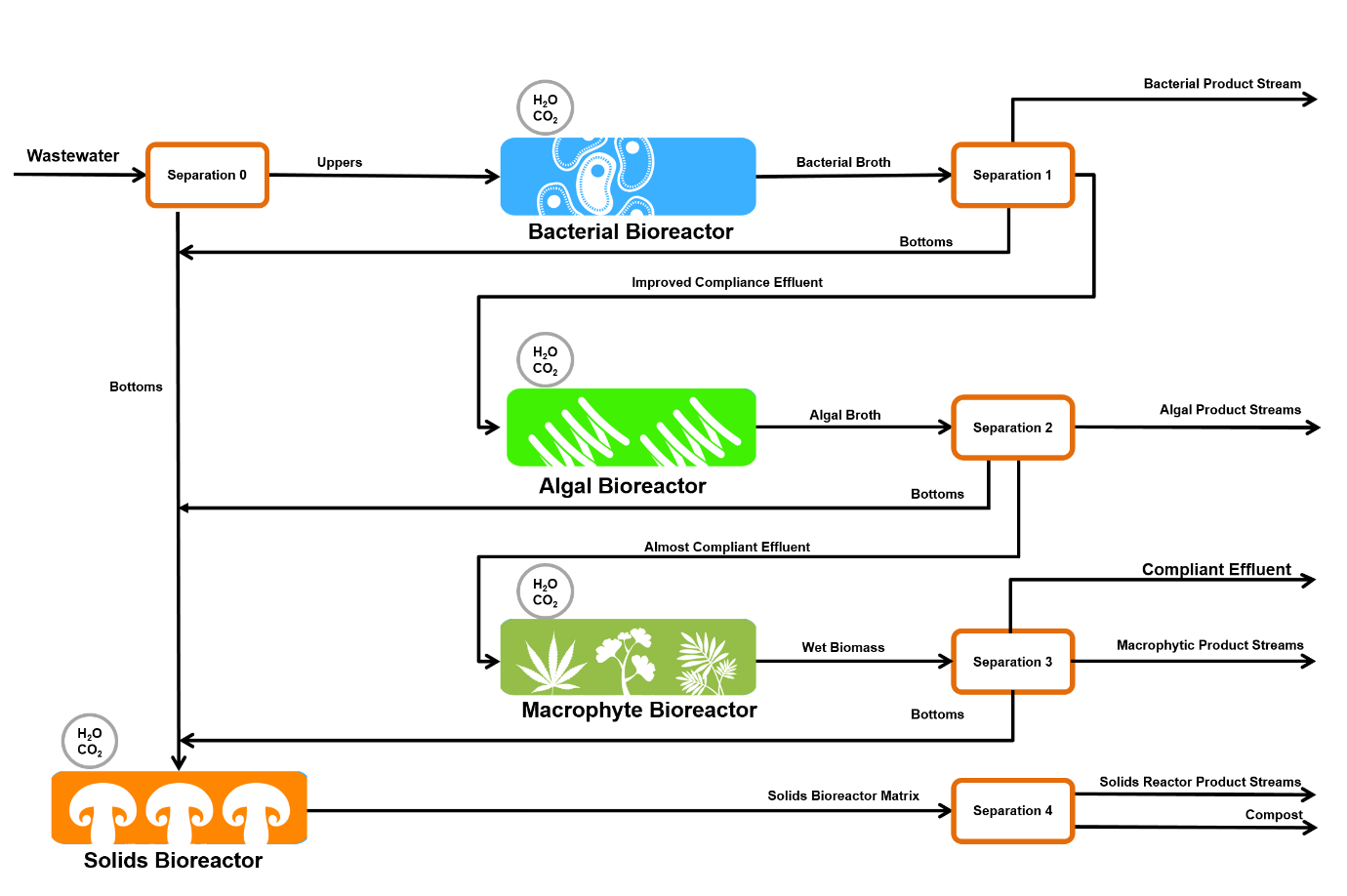Wastewater biorefineries (WWBR) are a response to the push towards resource recovery and the challenges encountered in that approach, while being concerned for the source of raw materials to supply the emerging bioeconomy.
What is a biorefinery?
A biorefinery is an integrative, multifunctional overarching concept that uses biomass as a diverse source of raw materials for the sustainable generation of a spectrum of intermediates and products while ensuring the minimisation of waste products. A wastewater biorefinery expands this application to include wastewater as a source of raw materials, operating in the wastewater arena and designed to generate products of value from waste nutrients and simultaneously producing clean or ‘fit for purpose’ water as the non-negotiable product (adapting the De la Fuente, 2014 definition)
What makes a wastewater biorefinery special?
Where the emphasis of wastewater treatment is on discharging compliant effluent through bioremediation, a biorefinery using wastewater has a dual emphasis on compliant effluent and creating bioproducts through biotransformation.
In South Africa, based on a clear need for intensified water re-use, increasing needs for alternative sources to supplement electricity supply, and a shortfall of funding in the wastewater treatment arena, a major incentive exists for a new approach to wastewater. The WWBR approach sets out to realise the opportunity it presents as a feedstock for bioproducts and energy, generated through robust bioprocesses. This potential of fit-for-purpose water reuse with economic incentive for byproducts is holistically encompassed by the WWBR concept.
A conceptual flow diagram illustrating the unit processes needed for a wastewater biorefinery is illustrated below. It is important to acknowledge here that managing multiple units in an integrated process are complex, but allows the system to optimise more than one objective - in this case both a valuable bioproduct and valuable fit-for-purpose water.

Considering WWBR in the context of sanitation is the focus of another flagship FWI project, Sustainable Sanitation, and emerging projects within Future Water are expanding the concept to include Integrated Mine Water Management.
Current technical work associated with Future Water
- Pulp and paper biorefinery project - Centre for Bioprocess Engineering (CeBER)
- Confectionary wastewater - Centre for Bioprocess Engineering (CeBER)
UCT Publications relevant to WWBR
- Harrison STL; Verster B; Rumjeet S; Raper T; Rademeyer S; Johnstone-Robertson M; Mosters L, 2016. Towards Wastewater Biorefineries: integrated bioreactor and process design for combined water treatment and resource productivity. WRC Report 2380-1-17.
(Please note, the current WRC version is missing the appendices. The final complete draft can be downloaded here - pdf, 406 pages, 12.5MB). - Verster B; Madonsela Z; Minnaar S; Cohen B; Harrison STL, 2014. Introducing the wastewater biorefinery concept. WRC Report K5/2000.
External resources of interest
- De la Fuente, T., 2014. A level playing field for renewable nutrients - Revision of the fertilisers regulation and end-of-waste criteria for biowaste. Presented at IWARR 2015 conference, Valladolid, Spain.
- International Water Association compendium on resource recovery report (pdf).
- International Water Association Resource Recovery from water cluster.